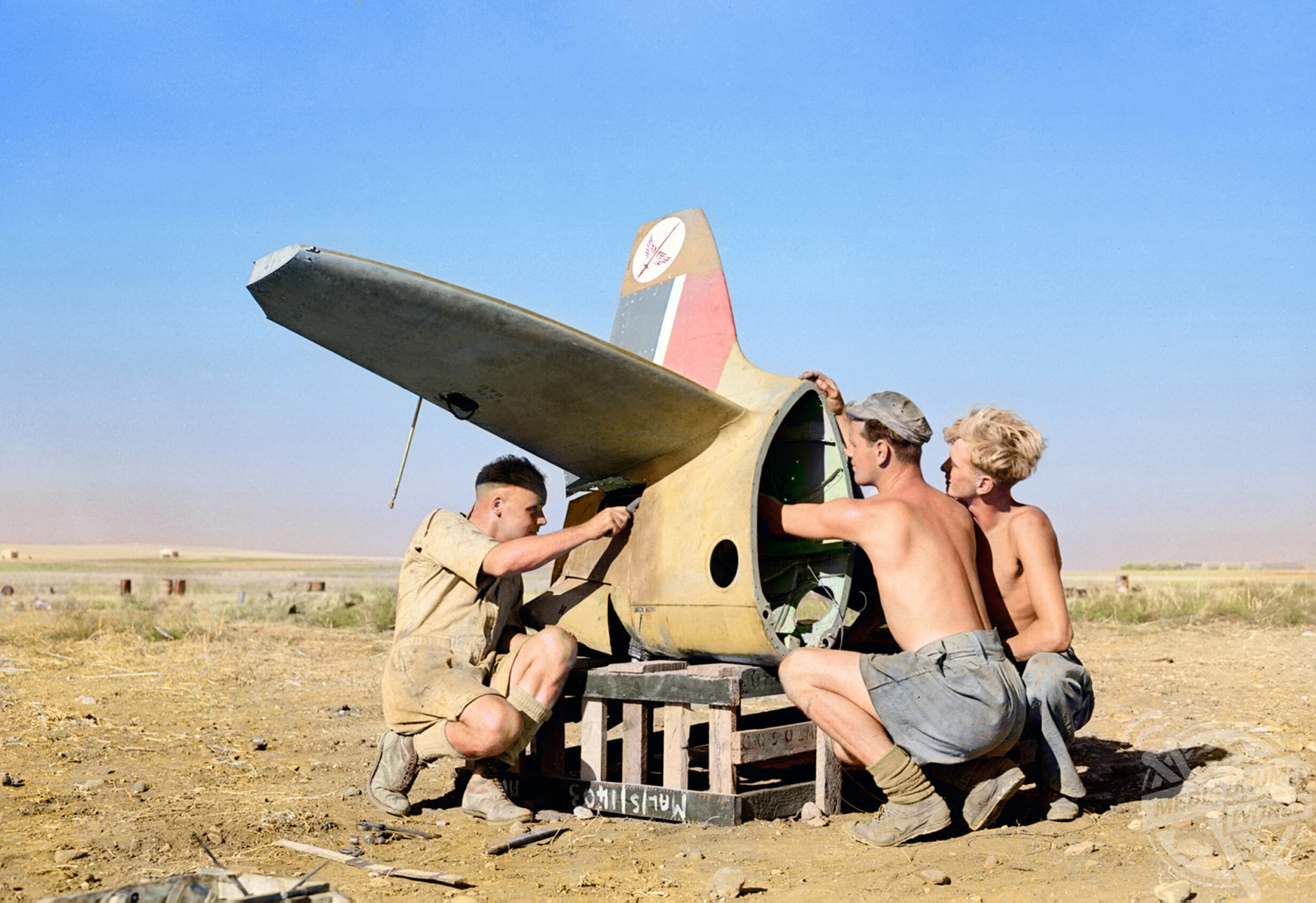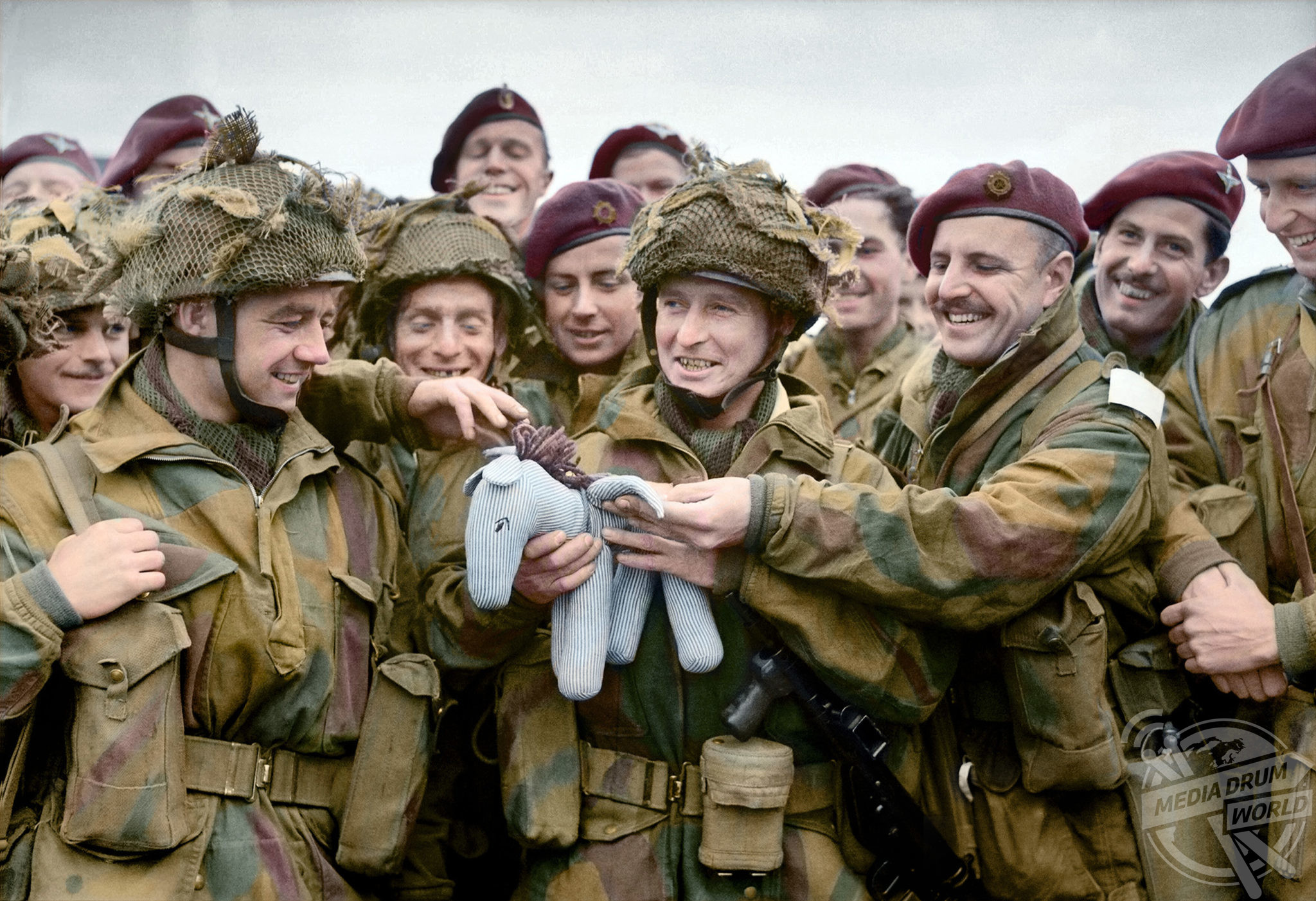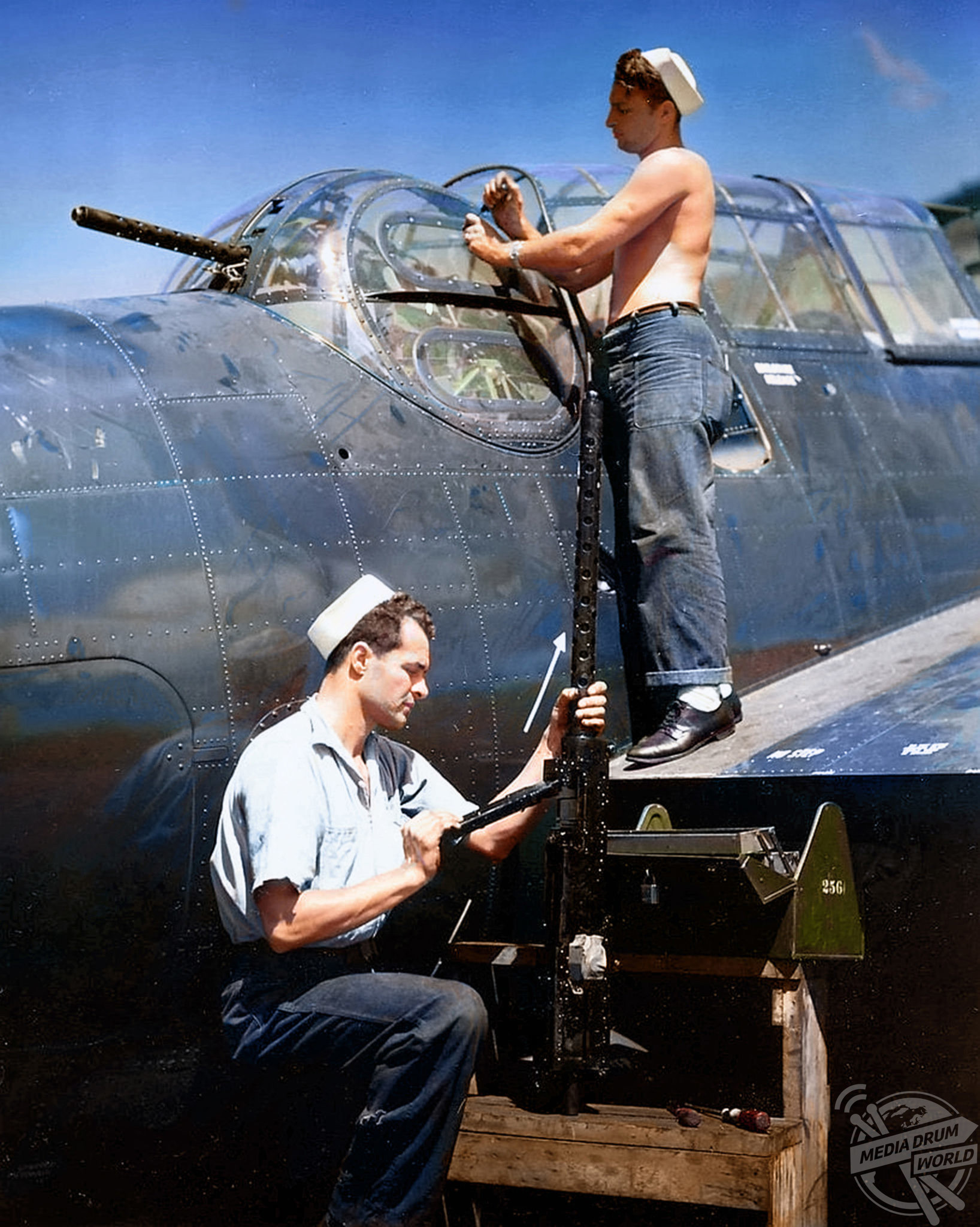
By Alex Jones
THE HEROIC actions of the brave allied airmen who risked their lives in WW2 have been brought to life in stunning colour.
Absorbing 80-year-old photos show the brutal reality that many pilots and their crew faced day to day in startling clarity. Striking images include a mechanic loading huge 500-pound bombs on an American bomber; tense paratroopers with the RAF bracing themselves in the fuselage of an Armstrong Whitworth Whitley aircraft; and a wounded US gunner being hauled from an aircraft after suffering serious injuries mid-flight.
Another incredible photo shows a concerned crowd gathering around the wreckage of a Spitfire.

The poignant and beautifully crafted colourisations were brought to life by colourist, Jake Laerbergh, from Deventer in the Netherlands.
“I am always amazed, and even a little angry, by how little today’s youngsters know about World War Two – and some adults too,” says Jake, who uses the Instagram handle @colourisedpieceofjake
“Our country was occupied and then liberated at huge cost and these actions need to be remembered.

“Too many kids know very little about our history and it’s not something that’s high on the lists of schools nowadays. So, I thought, ‘what if we make it more appealing for them, more attractive and real?’.
“Not the usual black and white stuff, no computer games which tell an inaccurate story, just real stories with real photos in colour which are as close to reality as humanly possible.
‘History is all about colour, you know”. The skies were just as blue back then as they are now. I’d like to see how these significant events actually were and want come as close as I can with my colour impressions.

“It’s highly addictive. Once I start on an image I can’t stop anymore. Especially when I put the first flesh tones in there.”
Although air warfare did take place in the First World War, it was absolutely critical in the Second. The first major attacks in World War II were made by German aircraft in the takeover of countries such as Denmark, Poland, and the Netherlands. Later, Germany would attempt to destroy England’s Royal Air Force in the Battle of Britain. During this battle, German planes dropped thousands of bombs on England for over three months straight. The Allies later countered with a major air attack on D-Day during the Invasion of Normandy. They launched around 14,000 sorties in one day.
There were also major air battles in the Pacific during World War II. The first major attack was when the Japanese bombed Pearl Harbour in 1941. Later, aircraft played major roles in the Battle of the Coral Sea, the Battle of Midway, and the Battle of Guadalcanal. The final blow in the war was also struck by aircraft when atomic bombs were dropped on the Japanese cities of Hiroshima and Nagasaki.

Well over 75,000 planes were blown out of the sky during the war with countless fatalities.
Jake, who often finds himself colourising to the early hours, says he spends more time researching photos than actually colourising them. The process of adding colour usually only takes a few hours but research can comfortably double the amount of time spent working on a shot.
“I usually stumble upon new photos I’m interested in whilst researching for the other photos I’m working on,” he explained.

“As long as the photo quality is sufficient with reasonable sharpness, detail and resolution I’ll save it for later.
“Due to my regular job as a commercial artist, I‘m used to colouring my own sketches and illustrations. Then two years ago I found a Facebook page with people posting old photographs of my town Deventer. Some people posted colourised photos on there, coloured by automated colouring websites/apps. I thought I should give it a go myself because those colourisations looked hideous.
“And soon I got the hang of it and improved myself with every photo I did! I thought I had ‘invented the wheel’ and started colourising local pics, not knowing that there was already a very well-established, worldwide, colourising community out there. Soon I was noticed by Doug Banks from the UK, a well-known and respected colouriser. Thanks to Doug I was able to reach a much greater audience.

“These old photographs are important. People died taking these photos and all too often the people pictured also perished fighting for our freedom. We must remember the horrors that took place all around us and keep telling their stories.”
For more of Jake’s work, please visit his Facebook page.






